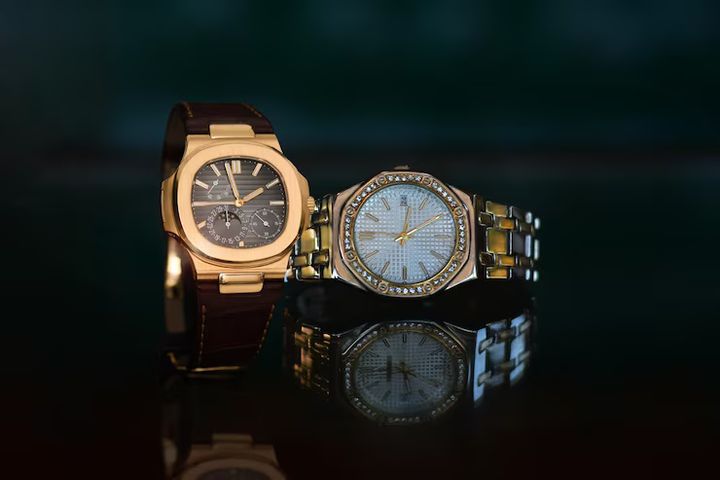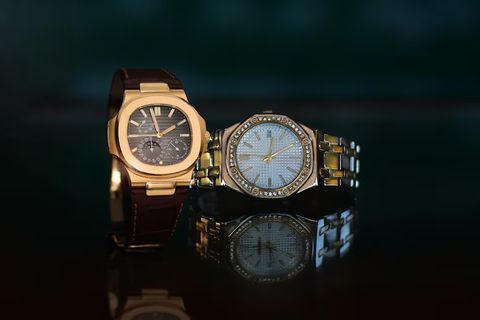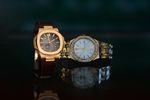
Luxury Watches: A Comprehensive Guide to Style, Craftsmanship, and Investment
Luxury watches are more than fashion accessories or tools to tell time—they represent timeless design, exceptional craftsmanship, and in some cases, smart investments. Whether you're new to horology or a seasoned enthusiast, understanding what makes a watch “luxury” can help you choose the right piece for your lifestyle, taste, or portfolio.
In this guide, we’ll explore the world of luxury watches—types, features, popular brands, how to buy, and why some of these timepieces appreciate over time.

What Defines a Luxury Watch?
A luxury watch stands out due to several factors:
-
Mechanical Movement: Most luxury watches use automatic or manual-wind movements, handcrafted by master watchmakers.
-
Materials: These watches feature high-grade materials such as 18k gold, platinum, titanium, and sapphire crystal glass.
-
Design and Heritage: Brands with long histories and signature styles tend to produce the most sought-after pieces.
-
Finishing and Detailing: Microscopic precision, hand-polishing, and artistic detailing are all part of high-end craftsmanship.
Luxury watches are also often backed by strong resale value and limited production, making them desirable for collectors and investors.
Benefits and Limitations
Key Benefits
-
Craftsmanship and Durability: Designed to last decades with proper care.
-
Status and Style: A symbol of taste, success, and heritage.
-
Resale and Investment Value: Certain models appreciate over time.
-
Brand Legacy: Ownership ties you to a legacy of innovation and precision.
Common Limitations
-
High Cost: Entry-level models start around $2,000 and premium models can exceed $100,000.
-
Maintenance Requirements: Mechanical watches need regular servicing.
-
Risk of Counterfeits: The high value attracts replica markets, making careful sourcing essential.
Types of Luxury Watches
| Type | Key Feature | Popular Examples |
|---|---|---|
| Dress Watches | Slim, elegant, minimalistic | Patek Philippe Calatrava, Cartier Tank |
| Diver’s Watches | Water-resistant, durable | Rolex Submariner, Omega Seamaster |
| Chronograph Watches | Stopwatch functions, sporty | TAG Heuer Carrera, Zenith El Primero |
| Pilot Watches | Large dials, GMT features | Breitling Navitimer, IWC Big Pilot |
| Luxury Smartwatches | Modern tech in classic form | TAG Heuer Connected, Montblanc Summit |
| Complicated Watches | Tourbillon, perpetual calendar, moonphase | A. Lange & Söhne Lange 1, Audemars Piguet Code 11.59 |
Key Features to Consider
When buying a luxury watch, these are critical features to evaluate:
-
Movement: Automatic or manual for traditional craftsmanship; quartz for precision.
-
Material: Look for stainless steel, ceramic, titanium, or gold, based on budget and lifestyle.
-
Complications: Extra functions like chronograph, moonphase, or dual time.
-
Water Resistance: Especially important for sports or dive watches.
-
Bracelet vs. Strap: Metal bracelets offer durability; leather straps offer elegance.
-
Brand Recognition: Rolex, Omega, Patek Philippe, and Audemars Piguet are highly valued.
Top Luxury Watch Brands (2025)
1. Rolex
-
Known for robust sports models, resale value, and precision.
-
Popular Models: Submariner, Datejust, GMT-Master II
2. Patek Philippe
-
Renowned for elegance, complexity, and generational craftsmanship.
-
Popular Models: Calatrava, Nautilus, Aquanaut
3. Audemars Piguet
-
Inventor of the luxury steel sports watch category.
-
Popular Models: Royal Oak, Royal Oak Offshore
4. Omega
-
Trusted for moon mission watches and Olympic timekeeping.
-
Popular Models: Speedmaster, Seamaster, Constellation
5. Cartier
-
Blends fine jewelry with watchmaking—great for formal style.
-
Popular Models: Tank, Santos, Ballon Bleu
6. TAG Heuer
-
Sporty, chronograph-heavy designs popular among young professionals.
-
Popular Models: Carrera, Monaco, Aquaracer
7. Jaeger-LeCoultre
-
Known for mechanical innovation and classic design.
-
Popular Models: Reverso, Master Control
8. A. Lange & Söhne
-
High-end German brand with emphasis on in-house movement and finish.
-
Popular Models: Lange 1, Zeitwerk, Saxonia
Trends in Luxury Watches (2025)
-
Sustainability in Materials: Ethical sourcing of gold and leather; lab-grown diamonds.
-
Smaller Case Sizes: Return to 36–40mm sizes for versatility and elegance.
-
Colorful Dials: Green, salmon, and blue dials dominate collections.
-
Pre-Owned Market Growth: Platforms like Chrono24 and WatchBox offer investment-grade resale.
-
Luxury Smartwatches: Hybrid models are emerging from heritage brands.
Buying Guide: How to Choose the Right Luxury Watch
Checklist:
-
What’s your budget?
-
Do you prefer classic or modern styles?
-
Are you buying for daily use or investment?
-
Which brand history aligns with your personality?
-
Do you have a trusted seller or authorized dealer?
Tips:
-
Buy from authorized dealers or certified pre-owned platforms.
-
Avoid heavily polished used watches as they lose sharpness and value.
-
Ensure the watch includes original box, papers, and warranty.
-
Consider servicing cost and insurance for watches above $5,000.
Comparison Table: Rolex vs Omega vs Patek Philippe
| Feature | Rolex | Omega | Patek Philippe |
|---|---|---|---|
| Brand Recognition | Very High | High | Very High |
| Entry Price Range | $6,000–$10,000 | $4,000–$8,000 | $20,000+ |
| Investment Potential | High | Medium | Very High |
| Water Resistance | Up to 300m | Up to 600m | Limited (Dress watches) |
| Availability | Long waitlists | Widely available | Limited availability |
| Maintenance Cost | Medium | Low to Medium | High |
FAQs About Luxury Watches
Q1: Are luxury watches good investments?
Some luxury watches, especially from Rolex, Patek Philippe, and Audemars Piguet, can appreciate over time, particularly rare or discontinued models.
Q2: What is the difference between automatic and quartz watches?
Automatic watches are mechanical and self-winding, offering craftsmanship and prestige. Quartz watches are battery-powered and known for accuracy and low maintenance.
Q3: How often should I service a luxury watch?
Every 3–5 years, depending on use and model. Regular servicing helps maintain accuracy and value.
Q4: Can I wear my luxury watch daily?
Yes, if it's durable and water-resistant. Models like the Rolex Submariner or Omega Seamaster are great daily wearers.
Q5: How do I know if a luxury watch is authentic?
Buy from authorized dealers or trusted resellers, and ensure you get the original box, serial numbers, and authentication papers.
Conclusion: Owning Time, Elegantly
Luxury watches are an intersection of design, tradition, and utility. Whether you're seeking a dependable daily piece, a statement accessory, or a valuable investment, understanding the world of horology will help you make a smart, lasting decision. Prioritize craftsmanship, buy from trusted sources, and choose a watch that reflects your values and lifestyle.


